Evolutionary Ecology
The department of Evolutionary Ecology gathers complementary skills in behavioural ecology, population dynamics, population biology, community ecology, and methodology (statistics and modelling). The research done in the department aims at studying how animal species evolve in a changing world by understanding the causes of the evolution of traits, adaptations and interactions. For that, we consider different levels of organization from individuals to populations and communities. Because organisms cannot be considered isolated from other biotic factors, we consider pathogens but also competing species within communities.
We study how individuals adapt to their environments that are largely impacted by anthropic pressures, and how life history traits and behaviour evolve in response to these pressures. Although we mainly focus on phenotype, we more and more consider the mechanistic link between the genotype and the phenotype. We develop the theoretical framework of our discipline through a conceptual and modeling approach. In parallel, we test hypotheses that arise from theoretical predictions through experimental, comparative and observational approaches on different biological models (insects, birds, mammals). Experimental approaches are developed in the laboratory (insect model) and in natura (bird, insect and mammal models). Observational and comparative research is mainly concerned with vertebrates. Our approaches are also, and increasingly, interested in the mechanisms of adaptive responses. In addition to the classical approaches of demographic analysis and trait change, methods of ecophysiology, chemical ecology and molecular biology are used.
Our department hosts several long-term studies of wild populations of different species. These long-term studies offer a valuable way to understand how biotic and abiotic factors affect individuals’ life history traits, and the functioning of populations in natura. Five populations of mammalian species are thus monitored for several years (more than 40 years on roe deer, 30 on Alpine marmots, 25 years on cats, 16 years on zebras, and 20 years on impala). Two of our study sites (La Sassière in Vanoise National Park (Alpine marmots) and Hwange National Park) have been certified as “Site d’Etude en Ecologie Globale” (SEEG), and two (ZA “Hwange” and ZA “Antarctic and sub-Antarctic”) were certified as “Zone Atelier” by the CNRS.
The department of Evolutionary ecology is also largely involved in training activities. Lastly, we also have strong socio-economic relationships. Indeed, because we address questions of major societal interest (global warming, public health) we tightly collaborate with socio-economic partners (Office Français de la Biodiversité, Vanoise National Park, Hwange National Park in Zimbabwe, Office National des Forêts, etc.) and participate to general public and media events.
Publications
Display of 961 to 990 publications on 2457 in total
Studying community assembly using the trait-based null model approach: synthesis and main results on grassland communities
Functional Ecology and Environment .
Poster
see the publicationFunctional Rarity: The Ecology of Outliers
Trends in Ecology & Evolution . 32 ( 5 ) : 356-367
Journal article
see the publicationMowing influences community-level variation in resource-use strategies and flowering phenology along an ecological succession on Mediterranean road slopes
Applied Vegetation Science . 20 ( 3 ) : 376 - 387
DOI: 10.1111/avsc.12311
Journal article
see the publicationHow to design trait-based analyses of community assembly mechanisms: insights and guidelines from a literature review
Perspectives in Plant Ecology, Evolution and Systematics . 25 : 29-44
Journal article
see the publicationDynamics of tree diversity in undisturbed Evergreen forest at Uppangala, Central Western Ghats
Paper presented at the Fourth Indian Biodiversity Congress (IBC 2017) . : 293
Conference paper
see the publicationWood and leaf strategies in a low-elevation rainforest of Western Ghats
Paper presented at the Fourth Indian Biodiversity Congress (IBC 2017), 10-12 March 2017, Pondicherry University, Puducherry, India . : p. 38
Conference paper
see the publicationSensitivity of community-level trait-environment relationships to data representativeness: a test for functional biogeography
Global Ecology and Biogeography . 26 ( 6 ) : 729 - 739
DOI: 10.1111/geb.12573
Journal article
see the publicationfunrar: An R package to characterize functional rarity
Diversity and Distributions . 23 ( 12 ) : 1365 - 1371
DOI: 10.1111/ddi.12629
Journal article
see the publicationTwo disjunct Pleistocene populations and anisotropic postglacial expansion shaped the current genetic structure of the relict plant Amborella trichopoda
PLoS ONE . 12 ( 8 ) : e0183412
Journal article
see the publicationPlant community structure and nitrogen inputs modulate the climate signal on leaf traits
Global Ecology and Biogeography . 26 ( 10 ) : 1138-1152
DOI: 10.1111/geb.12623
Journal article
see the publicationEnhancing the surveillance of antimicrobial resistance in fish farming in France
18. International Conference on Diseases of Fish and Shellfish . ( 18ème ed. ) : 466 p.
Poster
see the publicationEffectiveness and Cost Efficiency of Different Surveillance Components for Proving Freedom and Early Detection of Disease: Bluetongue Serotype 8 in Cattle as Case Study for Belgium, France and the Netherlands
Transboundary and emerging diseases . 64 ( 6 ) : 1771-1781
DOI: 10.1111/tbed.12564
Journal article
see the publicationNumerical Modeling of Friction Stir (FSW) and Linear Friction (LFW) Welding Processes
FSWP 2017 - 5th International Conference on Scientific and Technical Advances on Friction Stir Welding & Processing .
Conference paper
see the publicationImplications of the cattle trade network in Cameroon for regional disease prevention and control
Scientific Reports . 7 ( 1 ) : 43932
DOI: 10.1038/srep43932
Journal article
see the publicationData-Driven Risk Assessment from Small Scale Epidemics: Estimation and Model Choice for Spatio-Temporal Data with Application to a Classical Swine Fever Outbreak
Frontiers in Veterinary Science . 4
Journal article
see the publicationVulnerability of the British swine industry to classical swine fever
Scientific Reports . 7 ( 1 ) : 42992
DOI: 10.1038/srep42992
Journal article
see the publicationNew insights from niche theory on plant adaptation and ecosystem functioning
Thesis
see the publicationThe role of fathers in mammalian sex allocation
Mammal Review . 48 ( 1 ) : 67-74
DOI: 10.1111/mam.12112
Journal article
see the publicationQuantifying individual heterogeneity and its influence on life‐history trajectories: different methods for different questions and contexts
Oikos . 127 ( 5 ) : 687-704
DOI: 10.1111/oik.04725
Journal article
see the publicationOffspring sex ratio in mammals and the Trivers‐Willard hypothesis: In pursuit of unambiguous evidence
BioEssays . 39 ( 9 )
Journal article
see the publicationSuccesses and challenges of long-term field studies of marked ungulates
Journal of Mammalogy . 98 ( 3 ) : 612-620
Journal article
see the publicationEnvironmental and evolutionary effects on horn growth of male bighorn sheep
Oikos . 126 ( 7 ) : 1031-1041
DOI: 10.1111/oik.03799
Journal article
see the publicationA single multiplex of twelve microsatellite markers for the simultaneous study of the brown hare (Lepus europaeus) and the mountain hare (Lepus timidus)
Ecology and Evolution . 7 : 3931-3939
DOI: 10.1002/ece3.2943
Journal article
see the publicationMetabarcoding for the parallel identification of several hundred bats and their preys
10. Rencontres chiroptères du grand sud .
Conference paper
see the publicationLandscape population genetics of the greater horse-shoe bat (R. ferrumequinum) in West-Eastern France
14. European Bat Research Symposium .
Conference paper
see the publicationPopulation genetics of the greater horseshoe bat (R. ferrumequinum) in Western France
14. European Bat Research Symposium .
Conference paper
see the publicationIntroduction history overrides social factors in explaining genetic structure of females in Mediterranean mouflon
Ecology and Evolution . 7 ( 22 ) : 9580 - 9591
DOI: 10.1002/ece3.3433
Journal article
see the publicationEnseigner les recueil des données : explorer la variabilité biologique ... au chaud, dans une salle de cours
Statistique et Enseignement . 8 ( 2 ) : 79-85
Journal article
see the publicationManagement of the mycorrhizal soil infectivity with Crotalaria ochroleuca, an indigenous wild legume in the tropics: Impacts on microbial functional diversity involved in phosphorus mobilization processes in a sahelian soil
Ecological Engineering . 101 : 130-136
Journal article
see the publicationThe energy landscape predicts flight height and wind turbine collision hazard in three species of large soaring raptor
Journal of Applied Ecology . 54 ( 6 ) : 1895-1906
Journal article
see the publication
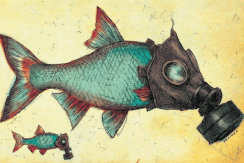
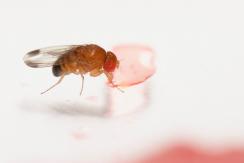
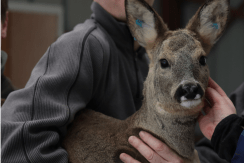
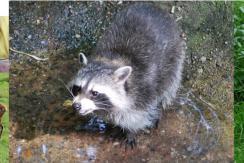
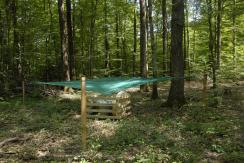
You also, comment on this article